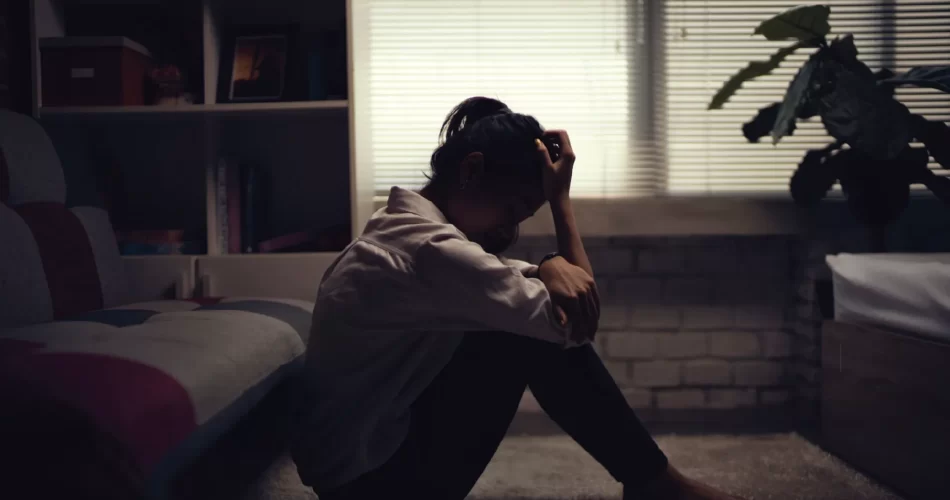Last Updated on 4 March 2024 by Vanessa Thoko
Seclusion in mental health in South Africa is the practice of placing a person in a room alone, without human contact, for a period of time.
It can be used as a last resort to protect the person or others from harm, but it is important to note that it can also have negative consequences, such as increased anxiety, agitation, and self-harm.
In this guide, we’ll dive into the world of mental health seclusion, with a special focus on South Africa, and explore the impact it has on patients and potential alternatives.
Quick Summary
- Seclusion in Mental Health: Isolation of individuals in a room without human contact, often used as a last resort for safety.
- South African Regulation: The Mental Health Act of 2002 governs seclusion use, emphasizing its limited use and concerns regarding its misuse.
- Impact on Patients: Seclusion in South Africa can lead to trauma, anxiety, distrust, and worsened mental health conditions.
- Alternatives: De-escalation techniques, environmental modifications, therapeutic activities, and medication offer more humane ways to manage challenging behavior.
Seclusion In Mental Health In South Africa

In South Africa, the Mental Health Act of 2002 regulates the use of seclusion in mental health settings.
The Act states that seclusion can only be used if it is the least restrictive means of protecting the person or others from harm, and that it must be used for the shortest possible period of time.
There are a number of concerns about the use of seclusion in South Africa. One concern is that it is often used as a punishment rather than a last resort.
Another concern is that it is not always used in accordance with the Mental Health Act.
For example, people may be secluded for longer periods of time than is necessary, or they may not be given adequate support while they are in seclusion.
There is a growing movement in South Africa to reduce the use of seclusion in mental health settings.
This movement is based on the belief that seclusion can be harmful to people’s mental health, and that there are more humane and effective ways to manage challenging behavior.
One way to reduce the use of seclusion is to provide more training to mental health staff on how to manage challenging behavior without using seclusion.
Another way to reduce the use of seclusion is to create more supportive and therapeutic environments for people with mental illness.
Use Of Seclusion For Managing Behavioural Disturbance In Patients
Seclusion is a controversial and highly regulated practice used in healthcare settings to manage behavioral disturbances in patients when other interventions have failed or are deemed insufficient to ensure safety.
It involves placing an individual in a specially designed, secure room, isolated from others, for a specified period until they regain control.
Here are some key points about the use of seclusion:
- Last Resort: Seclusion is considered a last resort when all other de-escalation techniques, medications, or interventions have failed to manage the immediate risk of harm to the individual or others.
- Regulations and Guidelines: Laws, regulations, and professional guidelines strictly govern the use of seclusion. It must be used under specific circumstances, with regular monitoring and documentation of the patient’s condition.
- Risk of Harm: While seclusion is intended to prevent harm, it can also lead to psychological distress, trauma, and exacerbation of the patient’s condition if not used appropriately or for prolonged periods.
- Informed Consent and Patient Rights: In most cases, patients must be informed about why seclusion is necessary, its duration, and be involved in decisions about their care to the extent possible.
- Staff Training and Monitoring: Trained staff must continuously monitor secluded patients for their safety and well-being. Regular assessments are crucial to determining when the patient can be safely released from seclusion.
- Documentation and Review: Thorough documentation of the events leading to seclusion, its duration, and the patient’s response afterward is essential. Regular reviews are conducted to assess the necessity of continued seclusion.
- Alternative Approaches: Efforts should be made to explore and implement alternative approaches to manage behavioral disturbances, such as de-escalation techniques, counseling, environmental modifications, or medication adjustments.
The use of seclusion remains a topic of ethical debate in the medical community due to its potential for harm and the importance of respecting patient autonomy.
Many healthcare institutions strive to minimize its use by emphasizing preventive measures and alternative interventions to manage challenging behaviors.
Impact Of Seclusion On Patients

The impact of seclusion on patients in South Africa can be significant.
Seclusion can be a traumatic experience.
It can have a number of negative consequences on people’s mental and physical health.
Some of the negative consequences of seclusion include:
- Increased anxiety and agitation
- Fear and mistrust of mental health professionals
- Post-traumatic stress disorder (PTSD)
- Self-harm and suicidal thoughts
- Worsening of mental illness symptoms
Seclusion can also have a negative impact on people’s relationships with their families and friends.
It can make it difficult for people to trust and feel supported by others.
It is important to note that not everyone who is secluded experiences negative consequences.
However, the research suggests that the risks of seclusion outweigh the benefits.
In South Africa, there is a growing movement to reduce the use of seclusion in mental health settings.
This movement is based on the belief that seclusion is harmful to people’s mental health.
That there are more humane and effective ways to manage challenging behavior.
Alternatives To Seclusion
There are a number of alternatives to seclusion that can be used to manage challenging behavior in mental health settings.
Some of these alternatives include:
De-escalation Techniques

De-escalation techniques are designed to help people calm down and regain control of their emotions when they are feeling agitated or aggressive.
There are a number of different de-escalation techniques that can be used.
Such as talking to the person in a calm and reassuring voice, giving them space, and offering them a safe place to go.
Environmental Modification

Environmental modification involves making changes to the person’s environment to reduce the risk of challenging behavior.
If a person is easily triggered by loud noises, their room may be moved to a quieter part of the facility.
Therapeutic Activities

Therapeutic activities can be used to help people develop coping skills and to manage their symptoms.
Some examples of therapeutic activities include art therapy, music therapy, and cognitive-behavioral therapy (CBT).
Medication

Medication can be used to treat some of the underlying conditions that may be contributing to the challenging behavior.
For example, if the person has schizophrenia, they may be given antipsychotic medication.
It is important to note that there is no one-size-fits-all approach to managing challenging behavior.
The best approach will vary depending on the individual’s needs and circumstances.
Conclusion
In conclusion, seclusion in mental health is a complex issue that impacts individuals across the globe, including South Africa.
As we navigate the terrain of mental health care, it’s crucial to understand the implications of seclusion.
Also advocate for more humane alternatives, and prioritize the well-being of individuals above all else.
South Africa, with its rich cultural landscape, can lead the way in showing the world that mental health care should always put people first.










